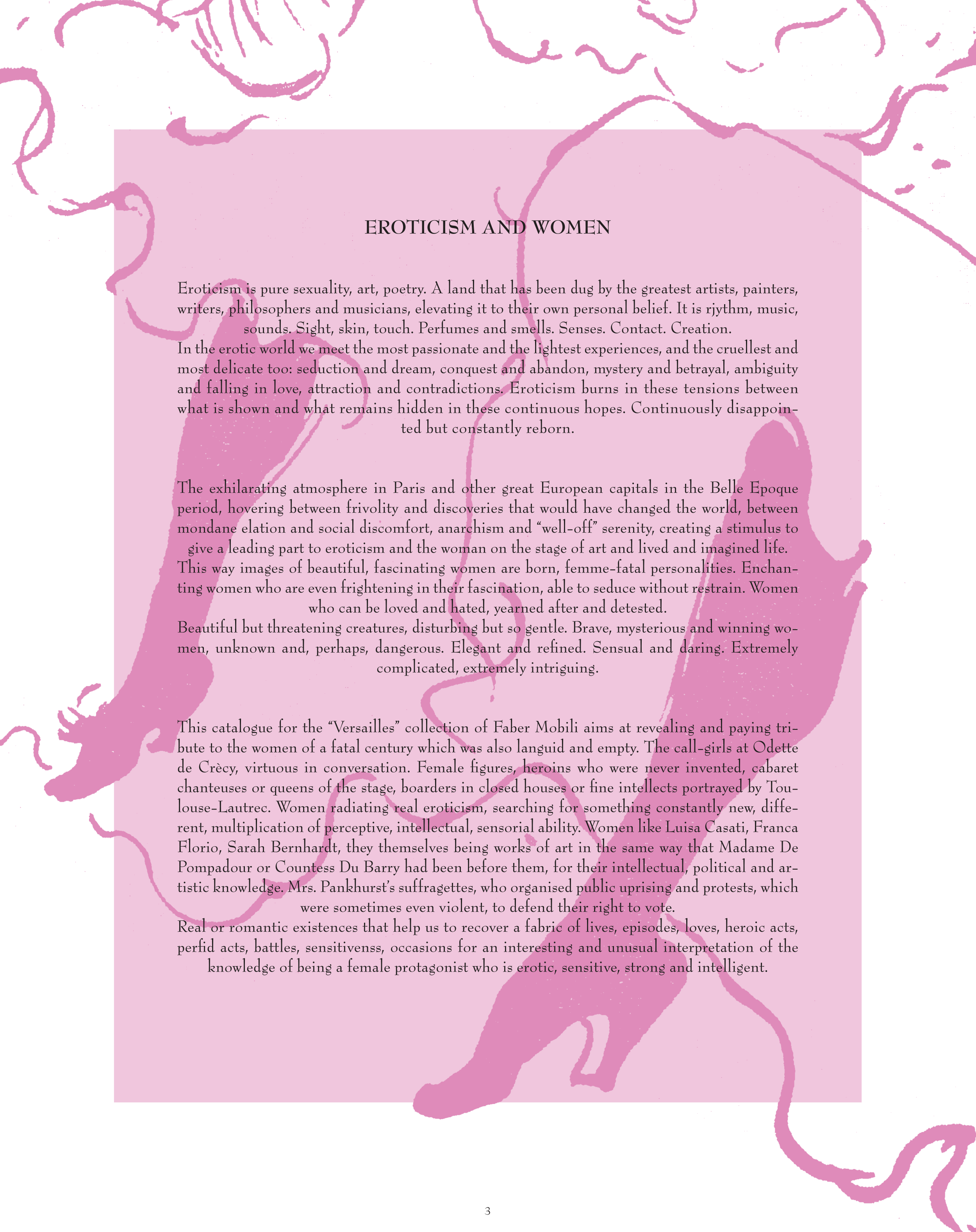EROTICISM AND WOMEN
Eroticism is pure sexuality, art, poetry. A land that has been dug by the greatest artists, painters,
writers, philosophers and musicians, elevating it to their own personal belief. It is rjythm, music,
sounds. Sight, skin, touch. Perfumes and smells. Senses. Contact. Creation.
In the erotic world we meet the most passionate and the lightest experiences, and the cruellest and
most delicate too: seduction and dream, conquest and abandon, mystery and betrayal, ambiguity
and falling in love, attraction and contradictions. Eroticism burns in these tensions between
what is shown and what remains hidden in these continuous hopes. Continuously disappoin-
ted but constantly reborn.
The exhilarating atmosphere in Paris and other great European capitals in the Belle Epoque
period, hovering between frivolity and discoveries that would have changed the world, between
mondane elation and social discomfort, anarchism and “well-off” serenity, creating a stimulus to
give a leading part to eroticism and the woman on the stage of art and lived and imagined life.
This way images of beautiful, fascinating women are born, femme-fatal personalities. Enchan-
ting women who are even frightening in their fascination, able to seduce without restrain. Women
who can be loved and hated, yearned after and detested.
Beautiful but threatening creatures, disturbing but so gentle. Brave, mysterious and winning wo-
men, unknown and, perhaps, dangerous. Elegant and refi ned. Sensual and daring. Extremely
complicated, extremely intriguing.
This catalogue for the “Versailles” collection of Faber Mobili aims at revealing and paying tri-
bute to the women of a fatal century which was also languid and empty. The call-girls at Odette
de Crècy, virtuous in conversation. Female fi gures, heroins who were never invented, cabaret
chanteuses or queens of the stage, boarders in closed houses or fi ne intellects portrayed by Tou-
louse-Lautrec. Women radiating real eroticism, searching for something constantly new, diffe-
rent, multiplication of perceptive, intellectual, sensorial ability. Women like Luisa Casati, Franca
Florio, Sarah Bernhardt, they themselves being works of art in the same way that Madame De
Pompadour or Countess Du Barry had been before them, for their intellectual, political and ar-
tistic knowledge. Mrs. Pankhurst’s suffragettes, who organised public uprising and protests, which
were sometimes even violent, to defend their right to vote.
Real or romantic existences that help us to recover a fabric of lives, episodes, loves, heroic acts,
perfi d acts, battles, sensitivenss, occasions for an interesting and unusual interpretation of the
knowledge of being a female protagonist who is erotic, sensitive, strong and intelligent.
3


